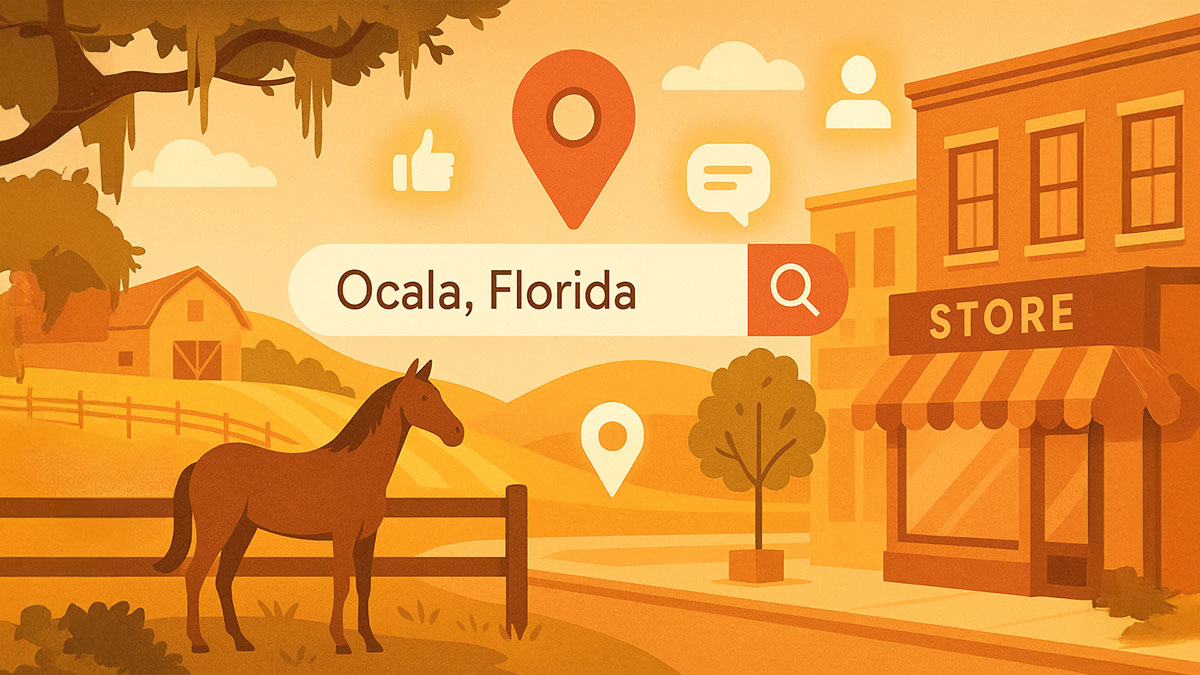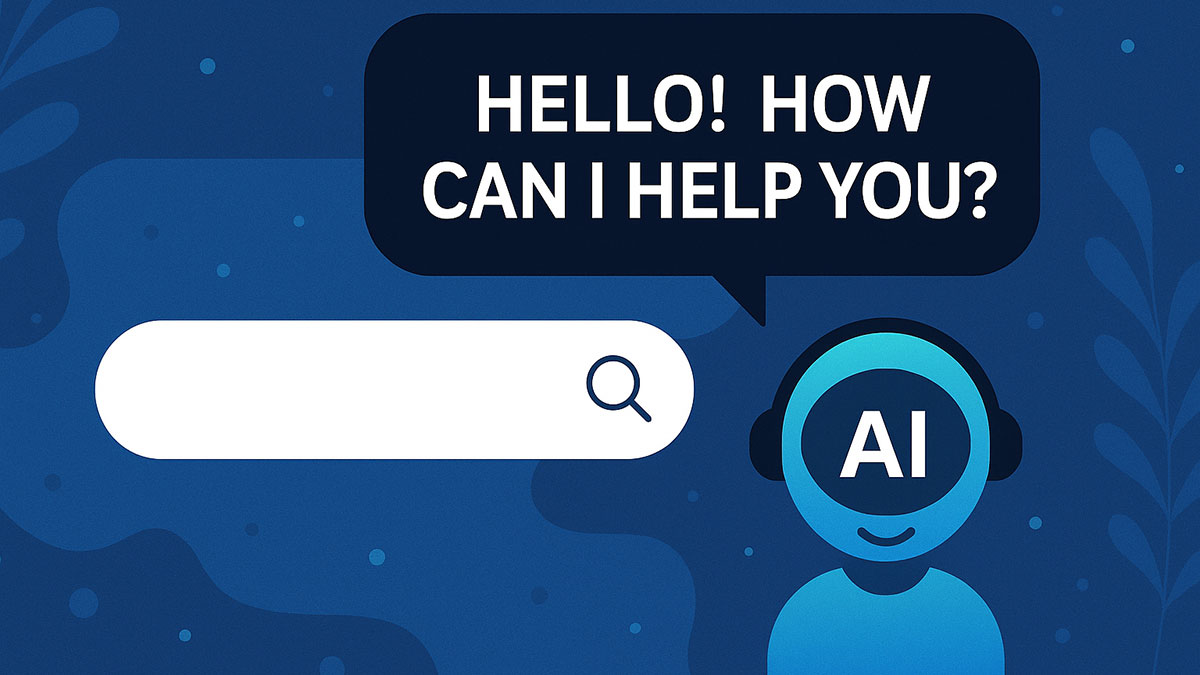A well-executed website has become a crucial component of a successful business strategy. A website serves as the digital storefront for a company, allowing it to showcase its products, services, and brand to a global audience. A well-planned website project holds the potential to create a lasting impression, engage users, and drive desired actions, such as making a purchase or submitting an inquiry.

The discovery phase plays a pivotal role in website development
Behind every successful website lies a meticulous planning process, and at the heart of it is the discovery phase. The discovery phase acts as the foundation upon which the entire website project is built. It involves in-depth research, analysis, and collaboration to gain a deep understanding of the project’s goals, target audience, and desired outcomes. This phase provides invaluable insights that shape the website’s strategy, design, and functionality.
Setting the stage for a successful website project
The discovery phase sets the stage for a successful website project by establishing a solid framework and roadmap. It brings clarity to the project’s objectives, requirements, and constraints, ensuring that all stakeholders are aligned from the outset. By investing time and effort in the discovery phase, businesses can identify and address potential challenges early on, thus minimizing the risk of costly revisions or delays later in the development process.
Furthermore, the discovery phase enables businesses to define their target audience, understand their needs and expectations, and identify key competitors. Armed with this information, they can develop a website that not only appeals to their target market but also stands out in a crowded digital landscape. Through careful planning and research, the discovery phase provides the necessary insights to create a website that drives traffic, conversions, and ultimately, business success.
In the following sections of this article, we will delve deeper into the specific aspects of the discovery phase, exploring how it uncovers user needs and expectations, analyzes competitors and industry trends, establishes project scope and requirements, and more. By understanding the crucial role of the discovery phase, businesses can unlock the full potential of their website projects and lay the groundwork for success.
- Understanding the Discovery Phase
- Uncovering User Needs and Expectations
- Analyzing Competitors and Industry Trends
- Establishing Project Scope and Requirements
- Crafting Effective Information Architecture
- Streamlining Design and Branding
- Conclusion
Understanding the Web Design Discovery Phase
The discovery phase of a website project can be likened to the groundwork or research phase. It is an essential stage where businesses and their digital marketing agency dive deep into understanding the project’s goals, requirements, and target audience. The purpose of the discovery phase is to gather insights, information, and data that will guide the entire website development process.
During this phase, stakeholders embark on a journey of exploration and analysis. They aim to uncover the key elements that will shape the website, such as user needs, industry trends, and technical considerations. The discovery phase is a time for asking critical questions, conducting thorough research, and gaining a comprehensive understanding of what the website project aims to achieve.
Key objectives and outcomes
The discovery phase encompasses several key objectives that contribute to the overall success of the website project. These objectives guide the activities and outcomes of this phase.
Understanding website user needs and expectations
One of the primary objectives of the discovery phase is to gain a deep understanding of the target audience. Through research and analysis, businesses aim to uncover user preferences, pain points, motivations, and goals. This knowledge helps shape the user experience (UX) design, content strategy, and overall website structure to cater to the intended audience.
Defining website project goals and requirements
Another crucial objective is to define clear project goals and requirements. This includes outlining the desired outcomes, functionality, and features of the website. The discovery phase helps establish specific, measurable, achievable, relevant, and time-bound (SMART) goals, laying the foundation for the subsequent stages of development.
Evaluating technical feasibility
The discovery phase involves assessing the technical feasibility of the project. It considers existing technical infrastructure, compatibility with different platforms and content management systems (CMS), and potential challenges that may arise during development. Understanding technical limitations and possibilities helps set realistic expectations and prevents costly issues in later stages.
Collaborative efforts between stakeholders
The discovery phase is not a solitary endeavor; it requires collaborative efforts between stakeholders to gather insights and make informed decisions. Digital marketing agencies work closely with businesses, clients, and other relevant parties to ensure a comprehensive understanding of the project’s requirements.
Collaboration involves effective communication, active participation, and knowledge sharing. Stakeholders provide valuable input, share industry expertise, and contribute insights from their respective domains. This collaborative effort ensures that the discovery phase covers all necessary aspects and incorporates a diverse range of perspectives, ultimately leading to a more comprehensive and successful website project.
By working together during the discovery phase, stakeholders can align their visions, goals, and expectations for the website. This collaborative approach fosters a sense of ownership and shared responsibility, leading to a more effective and efficient development process.

Uncovering User Needs and Expectations for Your Website
Understanding the needs and expectations of the target audience is paramount. This starts with conducting comprehensive user research and analysis. By delving into the mindset of the intended users, businesses can gather valuable insights that inform the entire website development process.
User research involves various methods such as surveys, interviews, usability testing, and analytics analysis. These techniques help businesses uncover user behaviors, preferences, and motivations. It allows them to gain a deeper understanding of how users interact with similar websites, what they expect from an online experience, and the challenges they encounter.
Through user analysis, businesses can identify patterns, trends, and pain points. This data-driven approach provides invaluable insights into user behavior, enabling businesses to make informed decisions when designing the website. By taking the time to truly understand users, businesses can create a website that caters to their needs and delivers a seamless experience.
Defining target audience personas
Once the user research and analysis are complete, the next step is to define target audience personas. Personas are fictional representations of specific user segments that capture their characteristics, goals, preferences, and pain points. They serve as a reference point throughout the website development process, ensuring that design and content decisions align with the target audience’s expectations.
Creating personas involves synthesizing the data collected during the user research phase. Businesses identify common traits, demographics, behavior patterns, and motivations among their target audience. These personas help humanize the audience and provide a framework for decision-making, allowing businesses to tailor the website to meet the specific needs and expectations of each persona.
By developing detailed personas, businesses gain insights into what drives their users, what problems they seek to solve, and what features and functionalities they value most. This understanding enables businesses to create a personalized and user-centric website experience that resonates with their target audience.
Identifying user goals, pain points, and preferences
Understanding user goals, pain points, and preferences is crucial in delivering a website that fulfills their needs. The discovery phase allows businesses to identify the primary goals users want to achieve when visiting the website. Whether it’s finding information, making a purchase, or seeking support, aligning the website’s functionality with user goals is key to creating a positive user experience.
Additionally, identifying user pain points helps address the challenges and frustrations they may encounter during their online journey. By identifying pain points, businesses can strategize solutions and optimize the website’s design and navigation to alleviate these issues. This enhances user satisfaction and encourages them to engage more deeply with the website.
Preferences play a significant role in shaping the design, content, and overall experience of the website. Businesses must identify user preferences regarding layout, color schemes, typography, and content presentation. By aligning the website’s aesthetics and structure with user preferences, businesses can create a visually appealing and engaging experience that resonates with their target audience.

Analyzing Competitors Website and Industry Trends
Analyzing competitor websites and strategies is a vital step to gain a competitive edge. By studying competitors’ online presence, businesses can identify strengths, weaknesses, and opportunities in the market. This analysis provides valuable insights that inform the website development strategy and help differentiate the business from its competitors.
Evaluating competitor websites involves assessing their design, layout, functionality, user experience, and content. By understanding what works well for competitors and what doesn’t, businesses can identify areas for improvement and innovation. This analysis helps uncover gaps in the market that can be capitalized on and guides decisions regarding the website’s overall design and feature set.
Furthermore, examining competitor strategies provides insights into their marketing tactics, messaging, and customer engagement. By understanding how competitors position themselves and communicate with their audience, businesses can refine their own messaging and identify unique selling points. This evaluation helps businesses develop a website that stands out and resonates with their target audience.
Leveraging industry best practices and benchmarks for your website
Industry best practices serve as a guiding framework during the discovery phase of a website project. Businesses can leverage these practices to ensure their website aligns with industry standards and user expectations. By implementing proven strategies and techniques, businesses can enhance the user experience and increase the chances of website success.
Benchmarking against industry leaders and top-performing websites provides valuable insights into what works in the industry. By examining key performance indicators such as website traffic, conversion rates, and user engagement metrics, businesses can set realistic goals and benchmarks for their own website. This helps establish performance targets and serves as a yardstick for measuring success.
Embracing industry best practices and benchmarks also builds trust with users. When a website follows established conventions and meets user expectations, it creates a sense of familiarity and reliability. Users are more likely to engage with a website that provides a seamless and intuitive experience, leading to increased conversions and customer satisfaction.
Anticipating emerging trends and future-proofing your website
Staying ahead of emerging trends is crucial to maintaining a competitive advantage. During the discovery phase, businesses should proactively anticipate emerging trends and consider future-proofing their website.
By keeping a pulse on industry trends, businesses can identify opportunities to incorporate innovative features and functionalities into their website. Whether it’s adopting new technologies, implementing responsive design, or integrating social media features, staying current with trends ensures the website remains relevant and meets the evolving expectations of users.
Future-proofing involves planning for scalability and flexibility. Businesses should consider how the website can adapt to future changes in technology, user behavior, and business goals. This may involve selecting a scalable content management system (CMS), designing a modular architecture, or considering the potential for future integrations and expansions. Future-proofing helps businesses avoid costly redesigns and redevelopments down the line.

Establishing Website Project Scope and Requirements
The discovery phase of a website project is crucial for defining clear project goals, objectives, and deliverables. This step lays the foundation for a successful project by providing a roadmap that guides the development process. By clearly articulating what needs to be achieved, businesses can align stakeholders and ensure everyone is working towards the same vision.
Defining project goals involves outlining the overarching purpose of the website.
Is it to increase online sales, generate leads, provide information, or enhance brand awareness?
By establishing clear goals, businesses can focus their efforts on the desired outcomes and measure success against defined metrics.
Objectives break down the goals into specific, measurable targets that contribute to their achievement. They serve as milestones and allow businesses to track progress throughout the project. Objectives can include metrics such as increasing website traffic, improving conversion rates, or reducing bounce rates.
Deliverables are the tangible outputs and outcomes of the website project.
These can include:
- wireframes
- design mock-ups
- content creation
- functional prototypes
- final website
Clearly defining the deliverables ensures everyone involved understands what is expected at each stage of the project.
Outlining website functional and technical requirements
During the discovery phase, it is essential to outline the functional and technical requirements of the website. Functional requirements define the features, functionalities, and user interactions that the website must support.
This can include:
- e-commerce capabilities
- user registration and login
- search functionality
- contact forms
- content management system integration
Technical requirements pertain to the underlying infrastructure, platforms, and technologies required to support the website’s functionality. This involves decisions on the hosting environment, content management system (CMS) selection, database integration, and any third-party integrations necessary for the website’s smooth operation.
Outlining both functional and technical requirements helps ensure that the website aligns with the business objectives and meets the needs of the target audience. It also provides a clear direction for the development team and allows for efficient project planning and resource allocation.
Determining website budget, timeline, and resources
Establishing a realistic budget, timeline, and resource allocation is critical to the success of a web design project. During the discovery phase, businesses must carefully assess their financial capabilities and allocate resources accordingly. This includes considering costs associated with web design, development, content creation, SEO optimization, and ongoing maintenance.
Setting a realistic timeline is essential to manage expectations and ensure smooth project execution. It involves understanding the scope of work, dependencies, and potential roadblocks. A well-defined timeline helps keep the project on track and allows stakeholders to plan accordingly.
Resource allocation involves identifying the necessary human resources, expertise, and tools required to execute the project successfully. This includes internal team members, external agencies or freelancers, and software or development tools. Ensuring the availability and suitability of resources is crucial to meeting project milestones and objectives.

Crafting an Effective Content Creation Strategy
In the discovery phase of a website project, crafting an effective information architecture is essential for delivering a seamless user experience. Information architecture refers to the organization and structure of content on a website, ensuring that users can easily find what they are looking for and navigate through the website intuitively.
Creating a clear and intuitive website structure involves categorizing content into logical sections and determining the relationships between different pages. This helps users understand the website’s overall organization and find information effortlessly. By organizing content in a logical manner, businesses can guide users through their journey and ensure a positive user experience.
During this phase, businesses must consider the target audience’s needs and preferences. Understanding how users think and interact with content enables businesses to structure the website in a way that aligns with their expectations. By anticipating user behavior and providing a seamless flow, businesses can enhance engagement and increase the likelihood of users achieving their goals on the website.
Organizing website content hierarchy and navigation
An effective information architecture includes organizing content hierarchy and navigation in a user-friendly manner. This involves prioritizing content based on importance, relevance, and user needs. By defining a clear hierarchy, businesses can highlight key information and guide users to the most relevant content.
Intuitive navigation is critical for ensuring that users can easily move through the website and access desired information. Businesses should carefully consider the placement and labeling of navigation elements, such as menus, links, and buttons. A well-designed navigation system helps users navigate effortlessly, reducing frustration and encouraging them to explore further.
During the discovery phase, businesses can conduct user testing and gather feedback to refine the content hierarchy and navigation. Iterative testing allows for continuous improvement, ensuring that the website structure effectively meets user needs and expectations.
Enhancing user experience and engagement on your website
Crafting an effective information architecture ultimately enhances the overall user experience and engagement on the website. By providing a clear structure, businesses make it easier for users to find what they are looking for, reducing bounce rates and encouraging longer website visits.
A well-organized information architecture helps users feel in control of their journey and empowers them to accomplish their goals. When users can easily locate relevant content and navigate through the website without confusion, it creates a positive impression and builds trust.
Moreover, an effective information architecture enables businesses to showcase their content in a compelling and engaging manner. By presenting content in a logical and visually appealing way, businesses can captivate users’ attention and encourage them to explore further. This can include incorporating multimedia elements, interactive features, and clear calls-to-action.

Streamlining Web Design and Branding
Streamlining web design and branding is crucial to create a cohesive and memorable online presence. The design of a website should align seamlessly with the brand identity, reflecting the values, personality, and visual elements that define the business.
Aligning website design with brand identity involves translating brand attributes into visual elements. This includes selecting appropriate color palettes, typography, imagery, and graphic styles that are consistent with the brand’s identity. By maintaining consistency in design, businesses can reinforce brand recognition and establish a strong connection with their audience.
During the discovery phase, businesses must analyze and understand their brand’s essence, target audience, and positioning in the market. This understanding enables them to craft a beautiful website design that resonates with their intended audience and communicates the brand’s unique value proposition effectively.
Incorporating visual elements and branding guidelines
To streamline design and branding, it is crucial to incorporate visual elements and adhere to branding guidelines. Visual elements such as logos, icons, imagery, and illustrations should be incorporated thoughtfully and consistently throughout the website. These elements serve as visual cues that reinforce the brand’s identity and create a cohesive user experience.
Adhering to branding guidelines ensures consistency and reinforces the brand’s identity across various touchpoints. These guidelines outline the specific rules and standards for using brand elements, such as logo placement, color usage, font selection, and spacing. By following these guidelines, businesses can maintain a consistent and professional visual presence that aligns with their brand identity.
Ensuring consistency and coherence across the web
Consistency and coherence are essential when streamlining design and branding across the entire website. Users should experience a seamless and coherent visual journey as they navigate through different pages and sections of the website. This consistency enhances user experience, reduces cognitive load, and reinforces the brand’s identity.
During the discovery phase, businesses should define and document the design and branding standards to ensure consistency. This includes establishing guidelines for layout, spacing, imagery, and content presentation. By ensuring consistency in design elements, businesses create a unified and harmonious visual experience that instills trust and familiarity in their audience.
Furthermore, businesses must consider the responsiveness of design elements across different devices and screen sizes. A website that provides a consistent and coherent experience across desktop, mobile, and tablet devices reinforces the brand’s professionalism and commitment to user-centric design.
Conclusion
The discovery phase is a critical component of any successful website project. It serves as the foundation upon which the entire project is built, providing essential insights and information that guide decision-making. Through user research, competitor analysis, and setting project requirements, the discovery phase helps businesses gain a deep understanding of their target audience, industry landscape, and project scope.
The impact of a well-executed discovery phase on project success
A well-executed discovery phase has a profound impact on the overall success of a website project. By investing time and effort into understanding user needs, evaluating competitors, and establishing clear project requirements, businesses set the stage for a website that meets user expectations and drives business goals.
A comprehensive discovery phase enables businesses to create a user-centric website that resonates with their target audience. By aligning the website’s design, content, and functionality with user preferences, businesses can enhance the user experience, increase engagement, and drive conversions.
Moreover, the discovery phase helps businesses identify potential challenges and mitigate risks early on. By addressing technical feasibility, anticipating emerging trends, and future-proofing the website, businesses can navigate potential roadblocks and ensure scalability and long-term success.
Encouraging adoption of the discovery phase for successful website projects
The importance of the discovery phase cannot be overstated. It sets the stage for a successful website project by providing clarity, aligning stakeholders, and guiding decision-making. To ensure the success of website projects, it is crucial to encourage the adoption of the discovery phase as a standard practice.
Businesses should recognize the value of investing time, resources, and expertise in the discovery phase. By prioritizing research, analysis, and collaboration during this phase, businesses can build a strong foundation for their website projects. It enables them to make informed decisions, create user-centric experiences, and achieve desired outcomes.
Furthermore, engaging with a digital marketing agency that emphasizes the importance of the discovery phase is key. A reputable agency understands the significance of gathering insights, defining goals, and understanding the target audience. They can guide businesses through the discovery phase and facilitate a collaborative approach that ensures project success.
In conclusion, the discovery phase is the cornerstone of a successful website project. By recognizing its importance, businesses can harness the power of user insights, competitor analysis, and strategic planning to create websites that engage users, drive conversions, and elevate their online presence. Embracing the discovery phase as a standard practice is instrumental in achieving website project success and staying ahead in the digital landscape.
Interested in scheduling a strategy session? Contact us.


